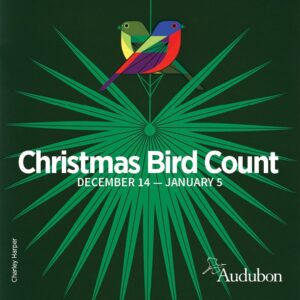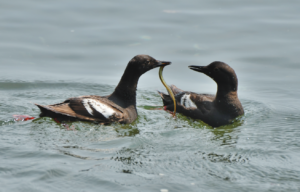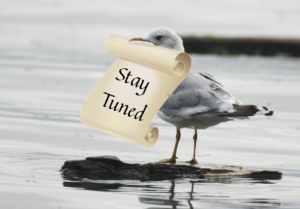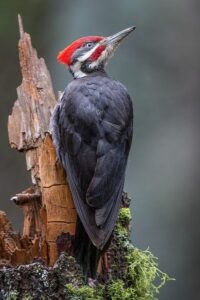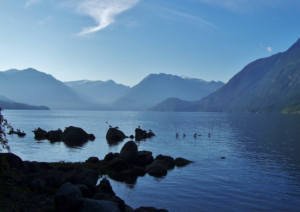Rachel Hudson – November 19, 2020
Map: Willapa Hills State Park eBird: Willapa Hills Trail - Hwy 603 crossing
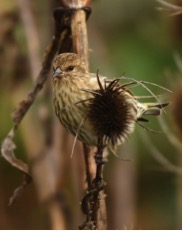
The Willapa Hills State Park Trail, quite the mouthful, is often just referred to as the Willapa Trail by those who know of it. One of the more under-appreciated trails in the area that is finally gaining more attention as of late, the Willapa Trail is a 56-mile long trail that starts in Chehalis and ends in Raymond. Some of it is paved, some is covered in gravel, and some has been carefully and beautifully built into long boardwalks and bridges. This trail was a railroad until it fell out of use and the Washington State Parks system acquired it about 30 years ago.
The Willapa Trail spans many, many habitats due to its sheer length. There are scores of river crossings, ponds, marshes, fields, evergreen forests, deciduous forests, and more along the way. At different access points, one can expect to easily traverse several differing habitats in a short amount of time thanks to the trail’s directness; as an old railroad-turned-trail, there are no meandering loops or switchbacks.
The Chehalis entrance to the state park trail begins at the end of a tiny road near the Veterans’ Museum. From I-5 driving south, take Exit 77 and turn right. Then, take the first left at the light, onto SW Riverside Drive. After half a mile, turn left onto SW Sylvenus Street. This small road will hang a sharp right and cross the steam train tracks; follow the road until it dead ends at the parking area for the Willapa Trail. For Discover Pass holders, turn left at the end of the road, and follow it to a large parking area with a map and a vault toilet and begin your journey there. There are a few spaces available before the left turn that are free parking.
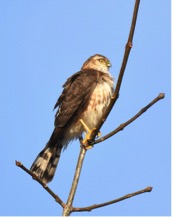
Beginning at the Discover Pass lot, in the winter, the immediate surrounding area will typically be a swarm of activity. Pause and listen as you open the car door; here, there are often Downy Woodpeckers, Northern Flickers, Spotted Towhees, Song Sparrows, Bushtits, and Black-capped Chickadees. More skulky birds can be found in the dense ground cover, such as Bewick’s Wrens and Ruby-crowned Kinglets. The tall, brown, spiky Teasel is common along the trail, and the Teasel around the entrance is a magnet for seed-loving Pine Siskins and American Goldfinches.
Looking beyond the trees on both sides of the entrance road to the parking lot, there is one seasonal pond on the south side, and one large permanent pond on the north side. The seasonal pond, though hard to see through the trees, is a haven for wintering waterfowl. Canada and Cackling Geese are omnipresent, as are Mallards, Ring-necked Ducks, and American Wigeons. Combing carefully through the flocks, one may find other seasonal specialties such as Green-winged Teal. In the northern permanent pond, divers such as Hooded Mergansers and Pied-billed Grebes reside. Later in the winter, Canvasbacks and the occasional Goldeneye or Scaup will also appear.
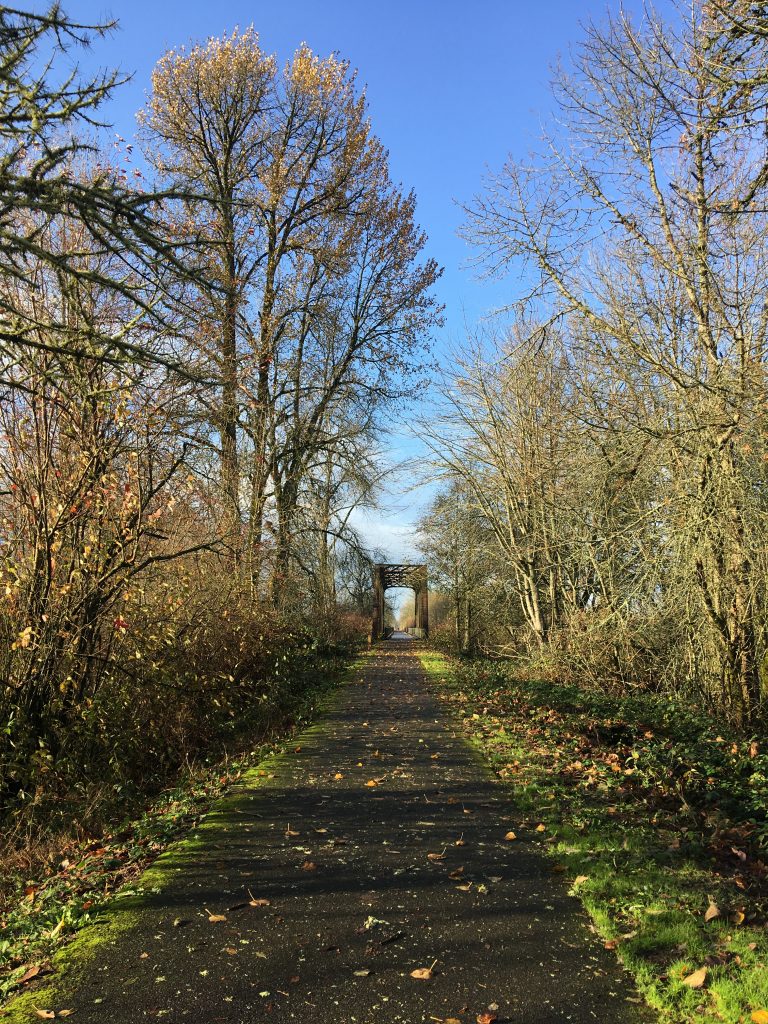
As you approach the trailhead, a good tip is to walk to the chain link gate on the south side of the smaller lot and search the edges of the adjacent field and blackberry bushes for sparrows. Here, White-throated Sparrows will occasionally overwinter, and Fox Sparrows, Juncos, and Gold-crowned Sparrows are typically resident. Here, too, California Scrub-Jays will soar carrying acorns or pieces of corn, and Sharp-shinned Hawks haunt the treetops, searching for distracted sparrows or other birds down below.
Continuing onto the trail itself, you will be faced with the first of many bridges along the beautiful Willapa Trail. More Ruby-crowned Kinglets, Spotted Towhees, and Song Sparrows lurk in the dense blackberry bushes on the other side of the bridge. On the north side of the bridge, at the end of the boardwalk, some large trees on the other side of the field and river are home to a large Bald Eagle nest that has been used for many years; the Eagles are also almost omnipresent. Red-tailed Hawks also haunt the fields here, and more Chickadees will begin to appear.
As you continue on toward the first road crossing, Shorey Road, the landscape opens up significantly. Though the Lazuli Buntings and Common Yellowthroats of summer are long gone, here now are American Robins and various interesting flyovers; on my walk I had a small group of Tundra Swans fly overhead. High-flying Common Ravens and a myriad of raptors are also expected. I typically turn back at the next small bridge adjacent to a large mostly-seasonal marsh on the south side. In this marsh reside more wintering ducks and geese, with the occasional swans mixed in. At this point, you will have walked about one mile (allowing for the meandering, indirect birders’ gait), making this about a 2-mile round trip if you turn back here.
Throughout the trail, expect anything! The merging of so many habitats here, especially in winter, can produce exciting finds. Eurasian Wigeons will often join the ranks of the regular American Wigeons, for example, and Peregrine Falcons will sometimes lurk in the trees near the water. There are always birds to be found here, and time spent carefully looking and listening at any point in the trail are bound to produce something worthwhile.
BEFORE YOU GO:
Before heading off for a birding adventure, here are some things to consider –
1. It’s always best to have a partner with you – both to maximize the joy and to minimize the risks. BHAS cannot ensure that these locations are totally safe.
2. Don’t forget to bring your mask and hand sanitizer. Have your mask handy and put it on when passing another person not in your party.
3. Leave valuables at home.
4. Check the weather and the bird reports before heading out. An easy way to check what birds have been seen is through Birder’s Dashboard http://birdingwashington.info/dashboard/. It is a simple way to research a species, place, or checklist.


